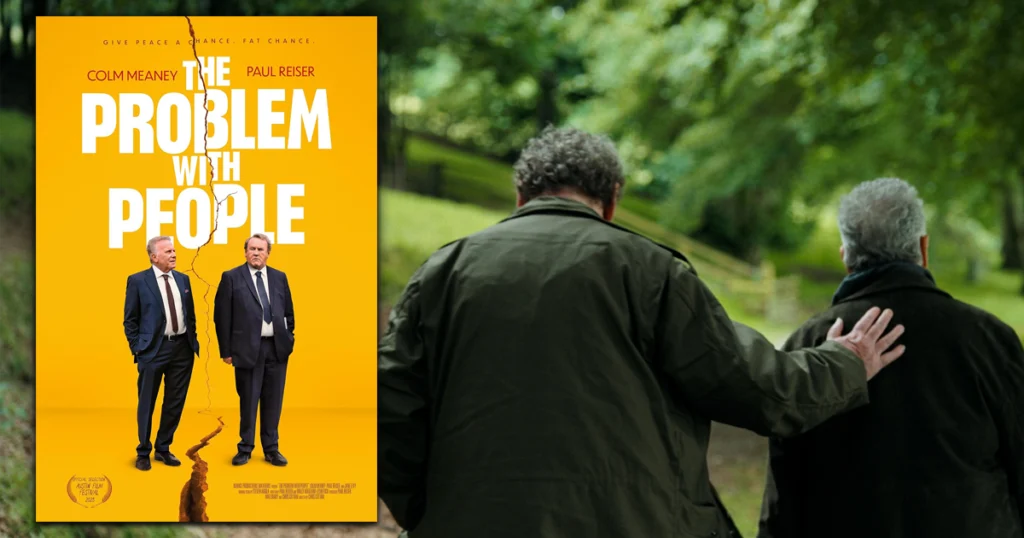In modern society, human beings learn to follow societal norms. Means of production and organizational schemes have forced people to live in urban spaces, educate themselves in formal institutions, and get their food from factories. Therefore, anyone who does not follow the norms defies the standard conventions. Nik Payne and Maria Vatne chose to do that. They are the subjects of the documentary, A New Kind of Wilderness. They married, and as they considered themselves wild spirits, decided to buy a farm, harvest their food, and homeschool their children there. Hence, Freja, Falk, and Ulv are raised this way, and Maria’s firstborn, Sorja, also lives there with them. Maria looked forward to minimizing their environmental impact so they could harvest food and solely buy what was necessary. Meanwhile, Maria would make a living by her work as a photographer and documented their journey in her blog, wildandfree.no.
Unfortunately, Maria suddenly got diagnosed with cervical cancer, which promptly developed. Sadly, she passed away in 2019. In this way, Nik has to balance his grief with continuing the lifestyle that he and Maria chose to live on. He promised her they would still live in Norway, even though it would be more convenient for him to move to England, where his family lives. A New Kind of Wilderness, which borrows the title of a blog post published by Maria on October 28th, 2018, follows the aftermath of her passing and the family shifts to societal arrangements. Director Silje Evensmo Jacobsen closely observes Nik and the three younger children; Sorja goes to live with her biological father after the death of her mother. This distance between siblings creates a fascinating discussion on the different levels of grieving in this specific scenario. The older child cannot live on the farm anymore. It brings her immense pain to think about the absence of Maria. This dichotomy allows us to analyze the different grieving among the siblings. Sorja understands more than any of them what it means to live without their mom.
Therefore, Silje chooses Ferja as the central subject, a juxtaposition between the adults and the kids. She has a free spirit. She runs in the wild, drinks water from the trees, picks flowers from the fields, and appreciates nature. Ferja firmly objects to moving from the farm and joining the school. She fears not bonding with the other children, while she enjoys homeschooling. The director smartly focuses on her, as she is the oldest of the children on the farm and a sort of leader in that environment. She is Nik’s helper in the troubled process. As Nik cannot afford to pay the loan for the property, the bank advises him to sell it. He does so, and the family moves to a smaller property in the city surrounding a rural landscape. Nik works in the harvesting and cattle culture, trying to raise the children in the lifestyle he promised Maria.
Structurally, the film uses archival footage of Maria to narrate and settle the tone of the wilderness. There is a clash in the introduction, precisely when the viewer discovers the tragedy, transmitting an overwhelming emotion on the screen. Every time there is a new photo from Maria and listen to her voice, the film hits a new emotional tone. It is a register of her idealist views that times have evaporated, an unexpected illness that took it all away. Even though the editing does not balance reasonably the moments of her narration and the present, the film still delivers a highly engaging emotional thrill. The film falls flat in moments but circles back to Ferja, a charismatic and curious young girl. Falk and Ulv are equally engaging and cute, but they are too young to understand all the changes surrounding them, utterly falling under Ronja and Ferja’s responsibility.
Visually, cinematographers Silje Evensmo Jacobsen, Karine Fosser, Fred Arne Wergeland, Espen Gjermundrød, Line K Lyngstadaas, and Natalja Safronova use the beautiful natural lighting and the landscapes of Norway to create the ambiance of the nature. The imagery explains why it allows the children to understand life differently. There are a ton of different textures, flowers, rocks, and animals that teach them to respect nature. Also, it helps to differentiate the distinct parts of this story: the heavenly and dreamy idealist and the aftermath of the tragedy, a sober and hurtful passage.
A New Kind of Wilderness narrates, in an hour and twenty minutes, a beautiful history of a family with a purpose: causing less harm to nature. The fascinating children and the complex portrait of grief make the film a heartbreaking and inspiring journey about life.
A New Kind of Wilderness recently played at DOC NYC.
Learn more about the documentary at the official website.
You might also like…
‘The Problem with People’ Movie Review


